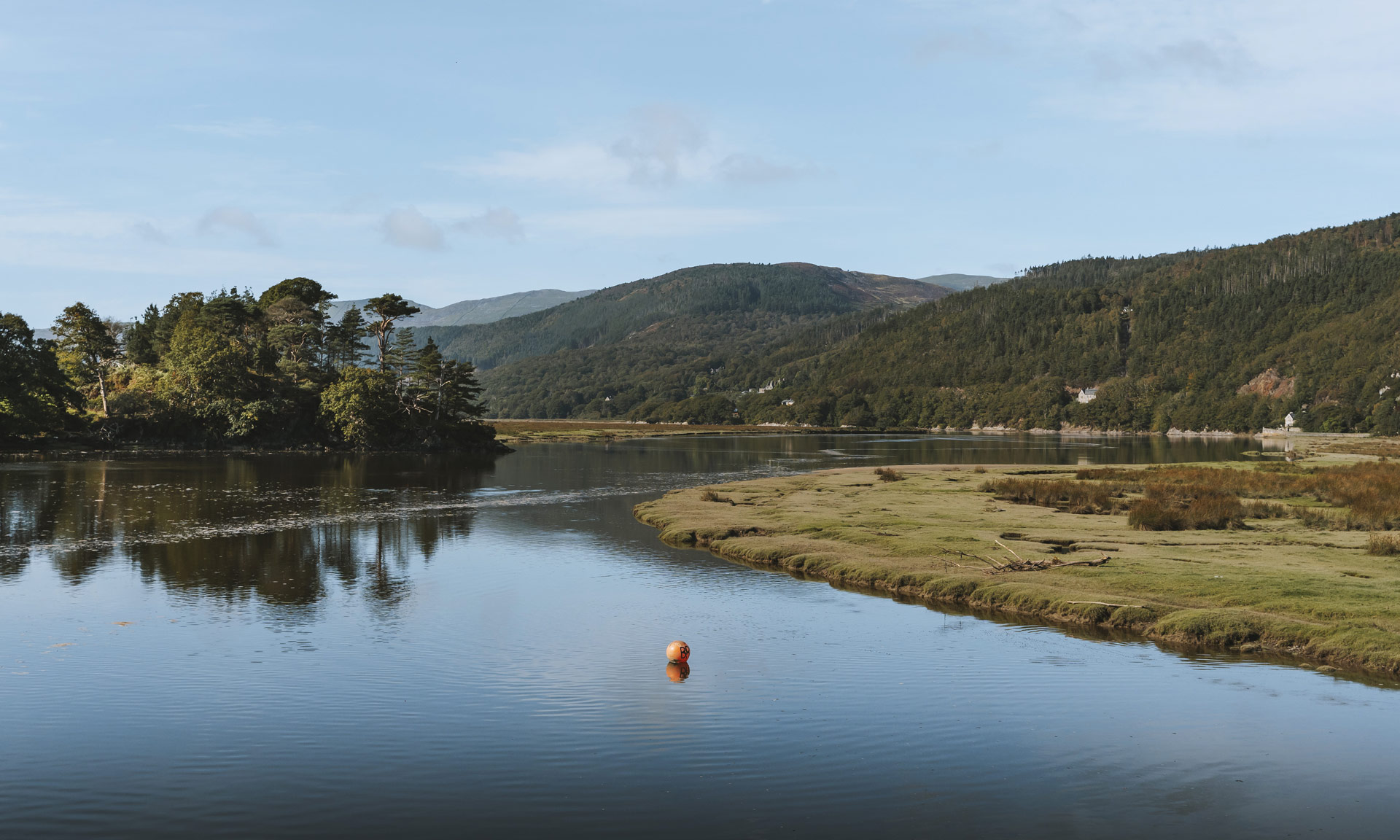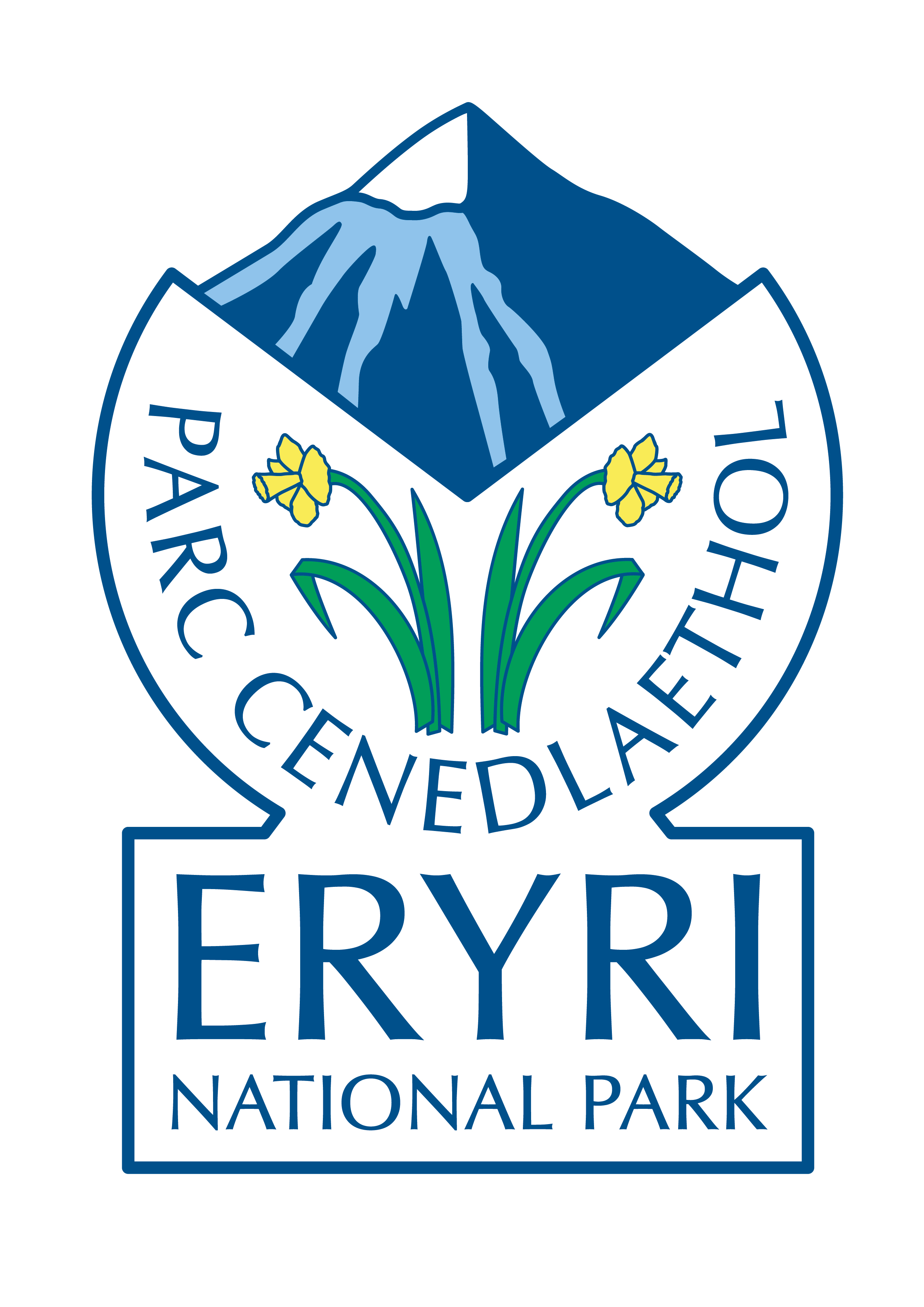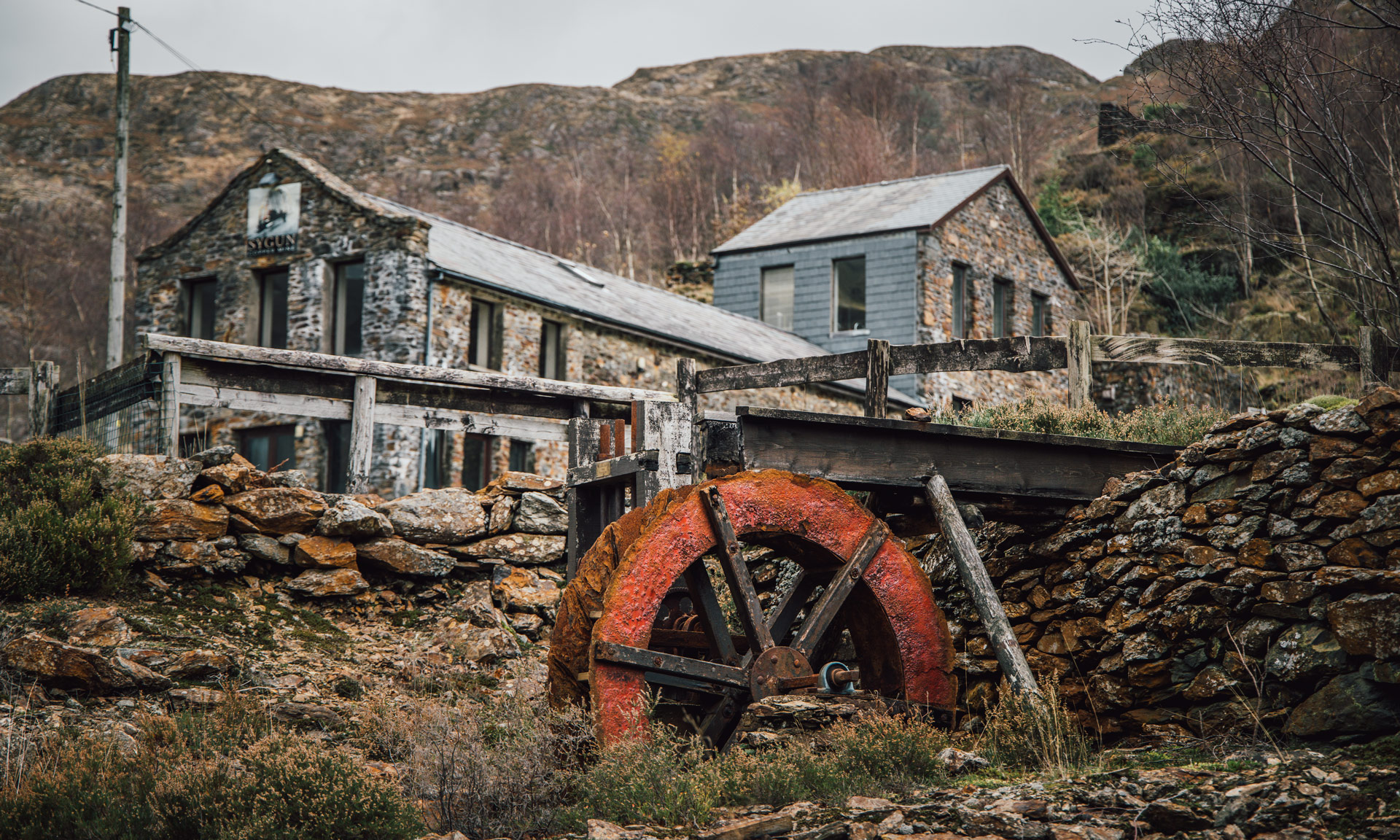The remains of man’s past activity in Eryri.
Eryri’s industrial heritage belongs to the land just as much as the spectacular scenery and varied wildlife.
To look at the landscape of Eryri is to notice all sorts of industrial remains—from the galleries of the massive quarries that scar the mountain to the inns and Victorian hotels that continue to welcome visitors to this day.
Many kinds of minerals are hidden in the mountains of Eryri, including copper, lead, zinc, iron, gold and manganese—all mined at one time or another.
Industrial heritage means more than changes to the landscape. It has shaped societies, affected the economy, kept people in their square mile and escorted the Welsh and their produce all around the world.
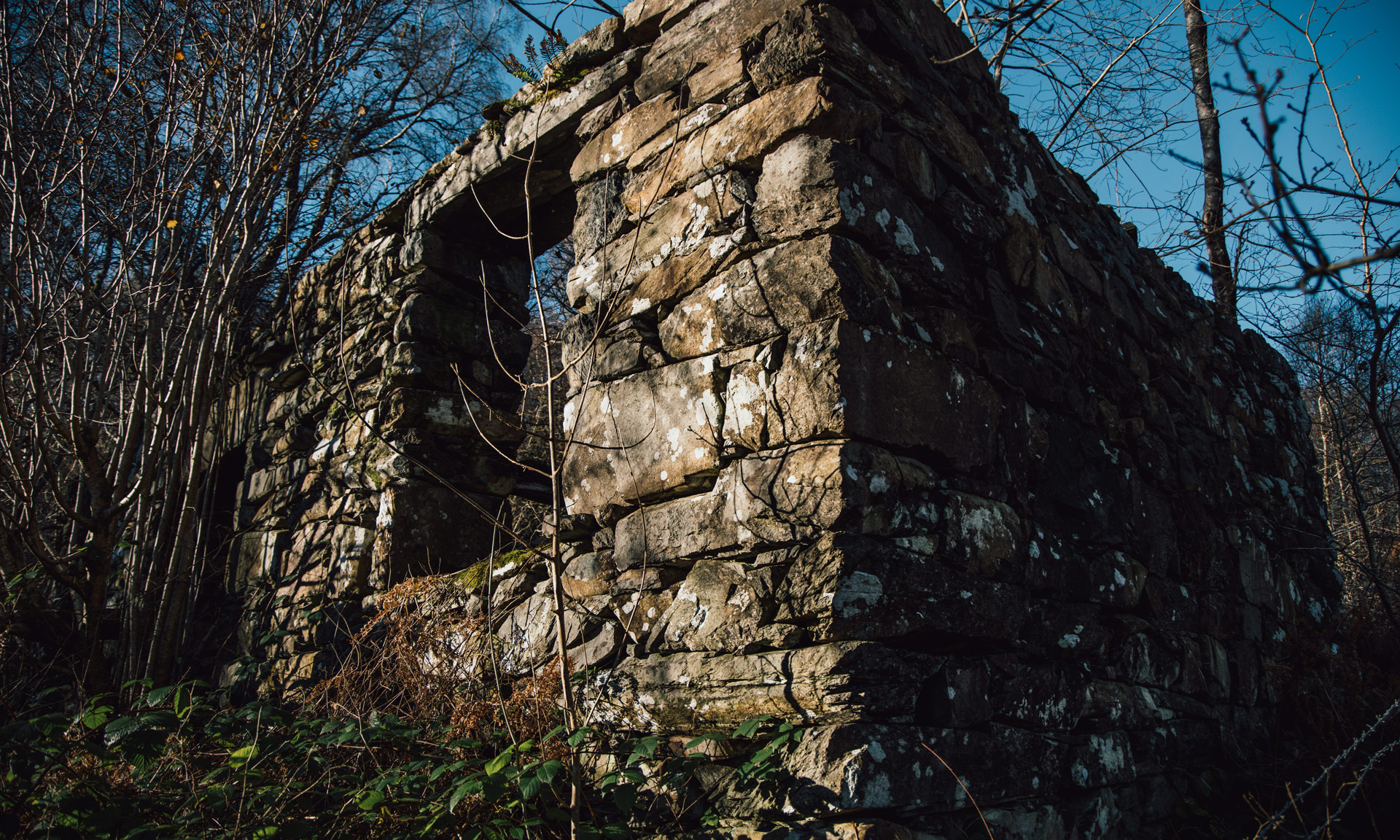
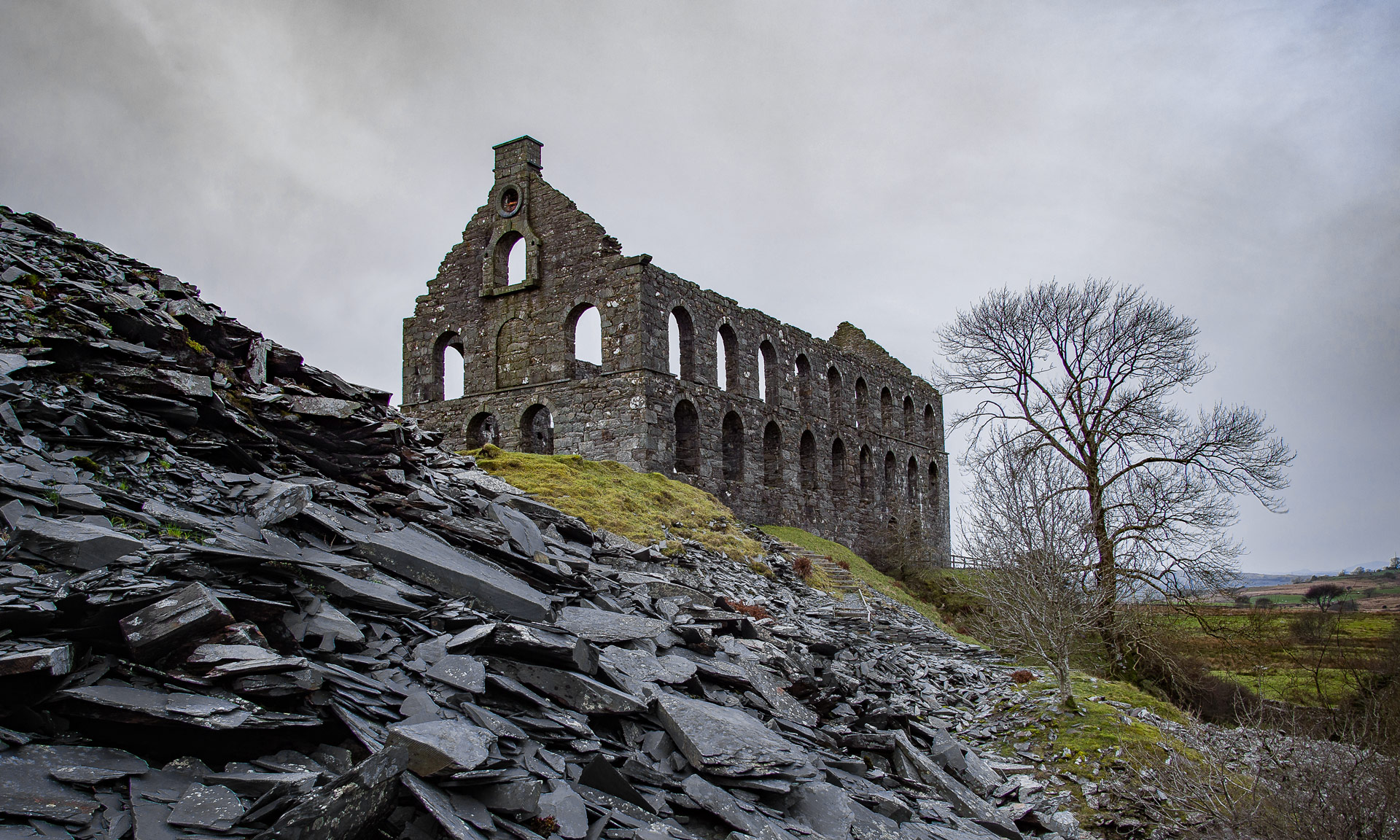
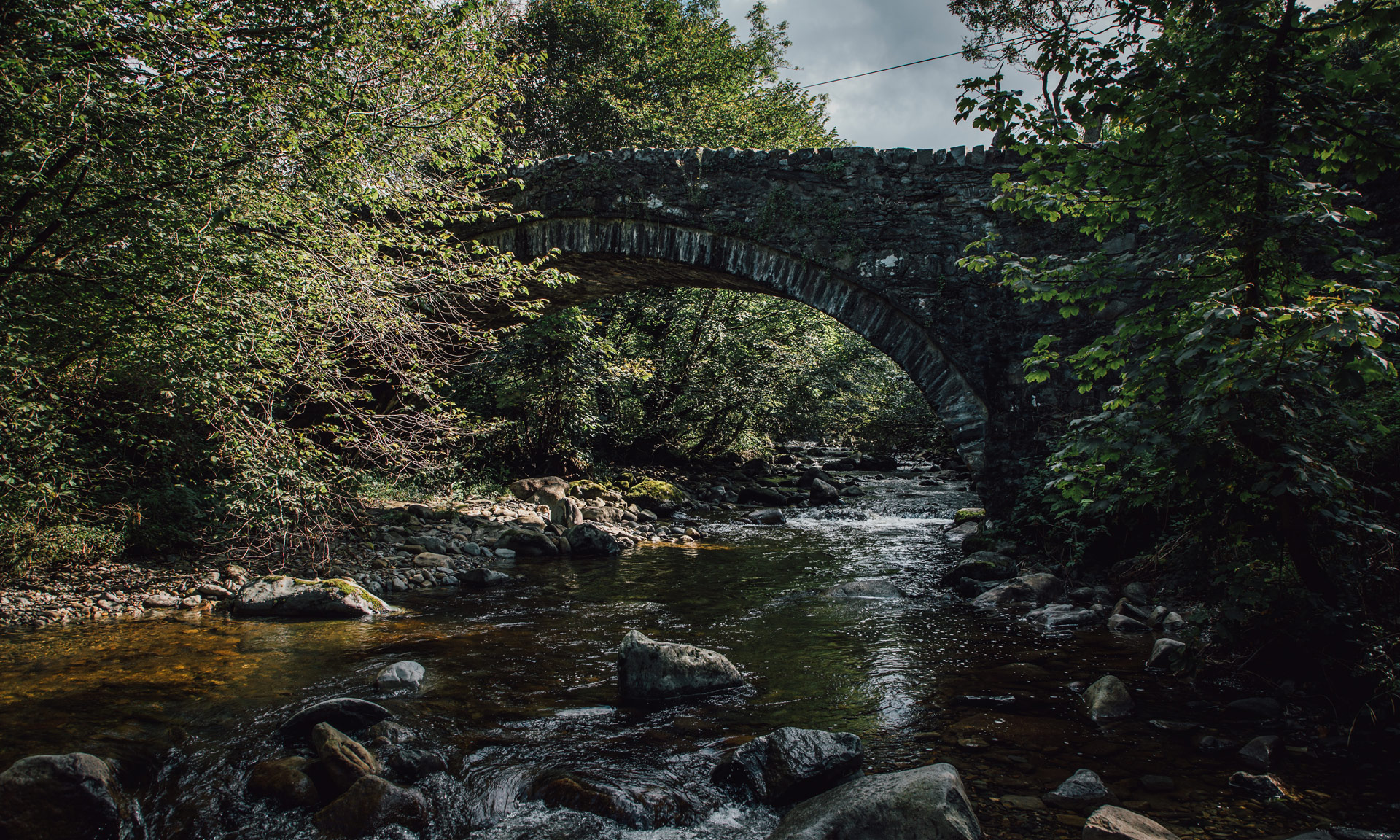
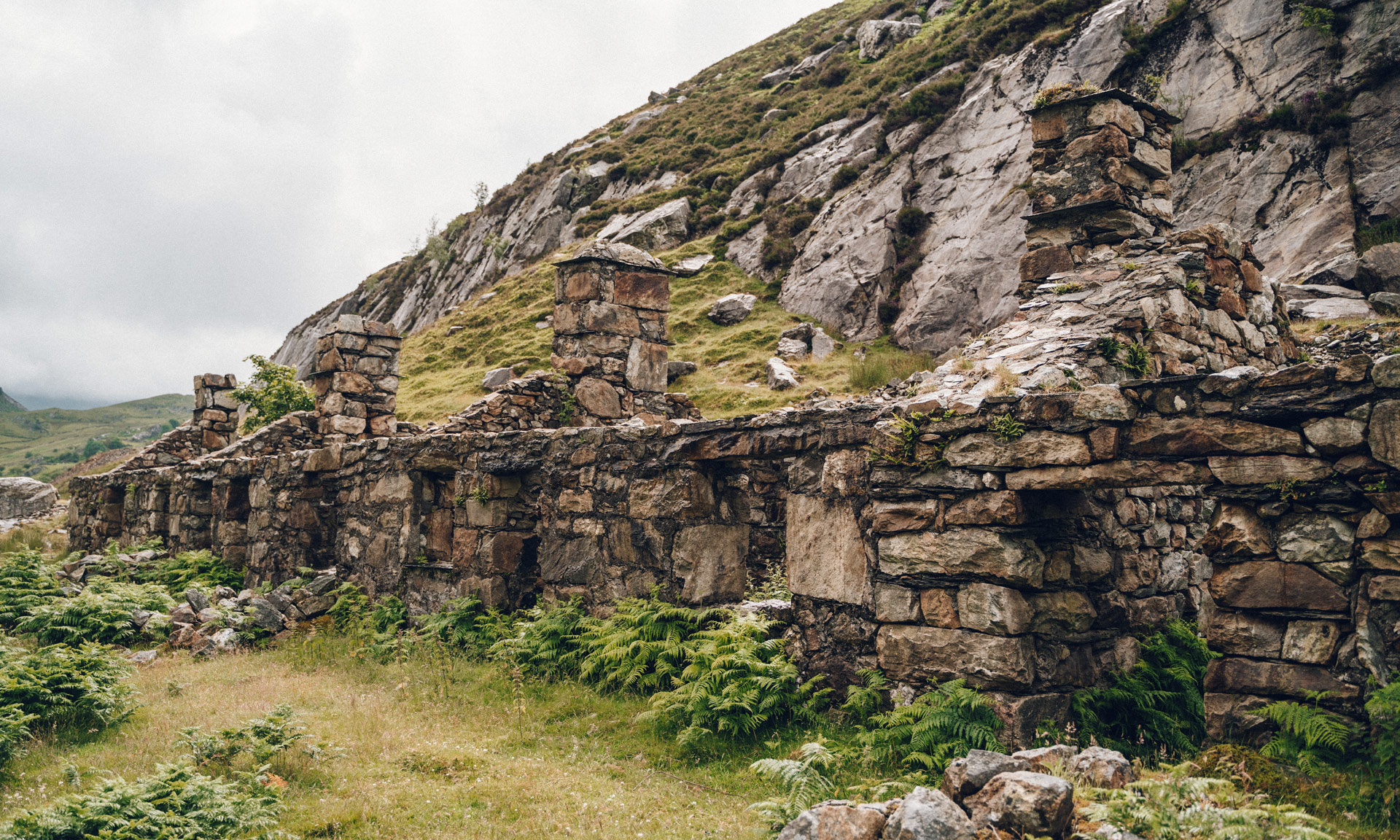
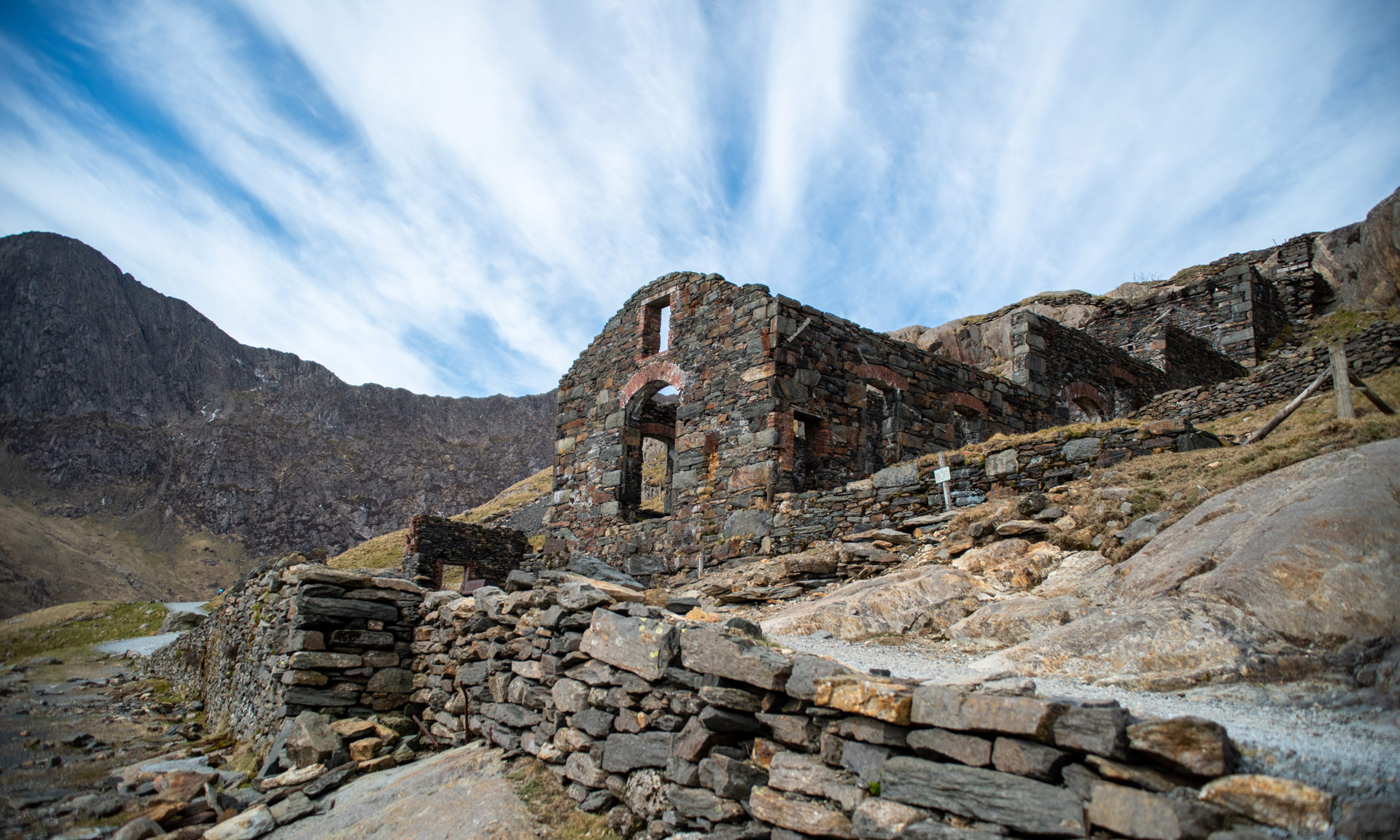
Eryri’s Slate Industry
The slate industry was undoubtedly one of Eryri’s largest industries. This is the industry that ‘roofed the world’, with the largest quarries exporting their products all around the world.
The remains of the industry can be seen in Bethesda, Blaenau Ffestiniog and Llanberis—all just a stone’s throw from the boundaries of the National Park.
The remains of slate quarries can also be seen within the boundaries of the National Park. Gorseddau Quarry was a small quarry in Cwmystradllyn with about 200 workers in 1859. The quarry closed in 1867 due to insufficient slate production. The remains of the quarry’s slate mill, Ynys-y-pandy slate mill, still stand today.
Gold
One of the largest gold mines was at Gwynfynydd in the Ganllwyd area near Dolgellau. More than £44 million of gold was extracted from Gwynfynydd between 1884 and 1998, the year the mine closed.
Gold was discovered in the Dolgellau area in the 1850s and led to a gold rush in the following years.
Gwynfynydd mine was owned by William Pritchard-Morgan, known as the ‘gold king of Wales’. There were 200 workers employed at Gwynfynydd, excavating in candlelight in narrow tunnels dug into the rock.
Tourism
Visitors have been visiting Eryri since the 19th century. After Thomas Telford completed work on the A5, a road linking London with Holyhead, the area experienced a significant increase in tourism.
The village of Betws-y-Coed was one of the places that experienced this growth in visitors. Because of the A5, remote parts of Eryri were now much more accessible places.
Residents of Eryri’s villages and towns took advantage of this increase by opening businesses that cater to visitors. Some of these businesses still exist today, such as the Royal Oak Hotel in Betws-y-Coed.
Copper mining
Copper mining in the Nant Gwynant area began in Roman times, but was not fully exploited until the Industrial Revolution.
In 1836, Sygun Mine near Beddgelert was being mined on an industrial scale, and by 1862, two to three thousand tonnes of copper had been excavated from the rock.
The mine was closed in 1903 as most of the copper had been extracted from the site.
Drovers
During the 18th and 19th centuries, food products were in great demand in English cities and towns. These places had experienced considerable population growth, and there was insufficient agricultural land in these areas to produce enough food, so they turned to north Wales.
Drovers were responsible for shepherding large flocks of livestock across hundreds of miles of mountain paths. These flocks were taken to the markets of the north of England to be sold. The journey was too long to slaughter the livestock beforehand.
By 1750, drovers moved up to 30,000 cattle a year to English markets.
